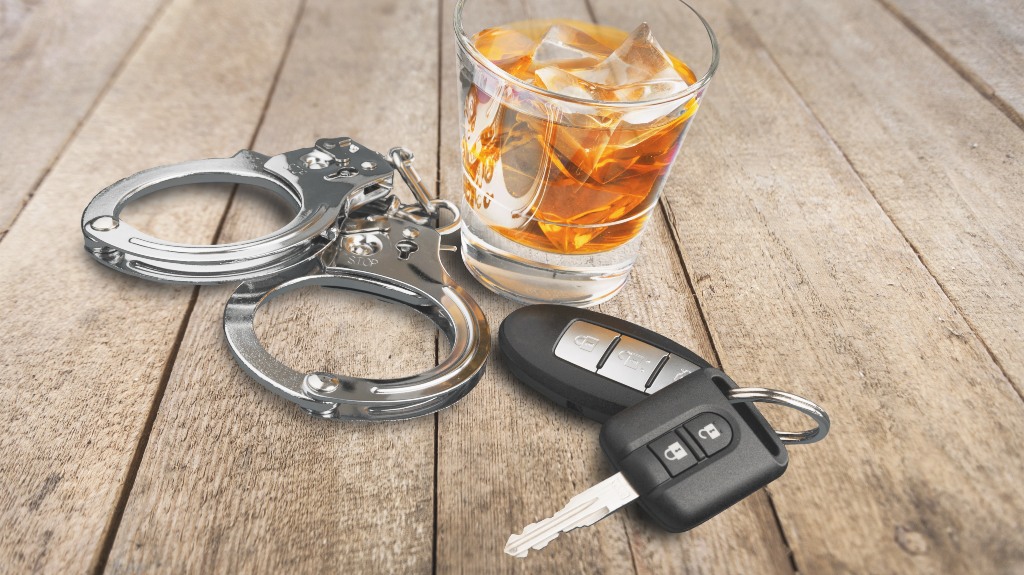Facing a DUI/DWI charge can be a stressful and complex process depending on the circumstances. A DUI/DWI is a criminal offense and is taken very seriously no matter what state you are in. If you or a loved one is involved in a DUI/DWI arrest, it is important for you to be informed on what the process is like so you aren’t surprised by what happens next. In this blog, we will be going over the DUI/DWI arrest process to help you better understand what to expect if you are involved in this process.

1. Initial Traffic Stop
The first step that occurs before a DUI/DWI arrest is typically a traffic stop. An officer may observe a driver speeding, disobeying traffic signals, or just reckless driving. This behavior will then lead to the officer turning on their lights and pulling over the vehicle. If the officer observes any signs of impairment in the individual such as slurred speech or smelling alcohol, they may ask the individual to perform a field sobriety test.
Determining Intoxication
The goal of a field sobriety test is to assess the driver’s balance, coordination, multitasking, and attention level, to determine if the driver is impaired by drugs or alcohol. One common test officers do is the walk-and-turn test. In this test, the officer will ask the driver to walk in a straight line, heel-to-toe, for nine steps. If the driver is unable to perform the test, they are likely under the influence of drugs or alcohol.
During the initial traffic stop, an officer may even administer a breathalyzer test. This test measures the amount of alcohol in a person’s breath and is used to estimate BAC (Blood alcohol content). In most states, the legal alcohol limit is 0.08%, so if the test shows a BAC above this limit, the officer has probable cause to arrest the driver.
2. The Arrest
If the officer determines that the driver is intoxicated, they can arrest the driver. During the arrest process, an officer will read the driver their Miranda rights, and handcuff them to ensure safety while transporting them to the police station.
3. Post-Arrest Procedures
Once the officer and driver arrive at the police station, the driver will undergo several post-arrest procedures:
- Fingerprints and Mugshot: The first step involves taking fingerprints and a mugshot to officially document their identity and the arrest.
- Personal Information Collection: Officers will record the suspect’s personal information, such as name, address, and date of birth. Additionally, the details of the arrest, including the time, location, and arresting officer’s information, are documented.
- Search and Confiscation of Belongings: The driver will be searched, and any personal belongings, including wallets, phones, and jewelry, will be temporarily confiscated.
- Health and Safety Assessment: A quick assessment of the driver’s physical and mental condition may be conducted to determine if they require medical attention.
- Additional Chemical Tests: If not already done, the driver may be required to do additional chemical tests (blood, urine, or breath) to confirm the presence of alcohol or drugs.
Possible Outcomes After the Arrest
- Release on Bail: After booking, the driver may be released on bail. The bail amount is set based on factors like the severity of the offense, criminal history, and flight risk. Once this is paid, the suspect is released with instructions to appear in court.
- Release on Own Recognizance (OR): In some cases, usually for first-time offenses, the driver may be released without paying bail but must promise to appear in court.
- Remain in Custody: If the offense is severe or the driver is suspected to be a danger to the public, they may remain in custody until their court appearance. Bail may be denied for repeat offenders or those with a history of missing court dates.
- Court Appearance: All drivers, whether released or in custody, must appear in court where charges are read, and they can enter a plea. This usually occurs within a few days to a few weeks after the arrest.
Importance of Legal Representation for the Next Steps
If you’re arrested with a DUI/DWI charge, having an experienced attorney is crucial for navigating the next steps. An attorney will help with preparing for the arraignment, gather evidence, and build a strong defense.
C.L. Swisher Legal Group understands the seriousness of DUI charges and is committed to exploring all available defense strategies to protect your future. Contact us today for a consultation.

